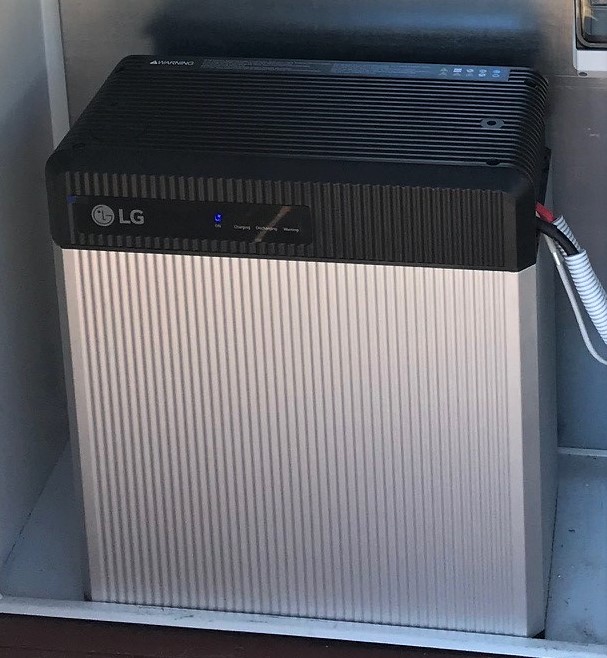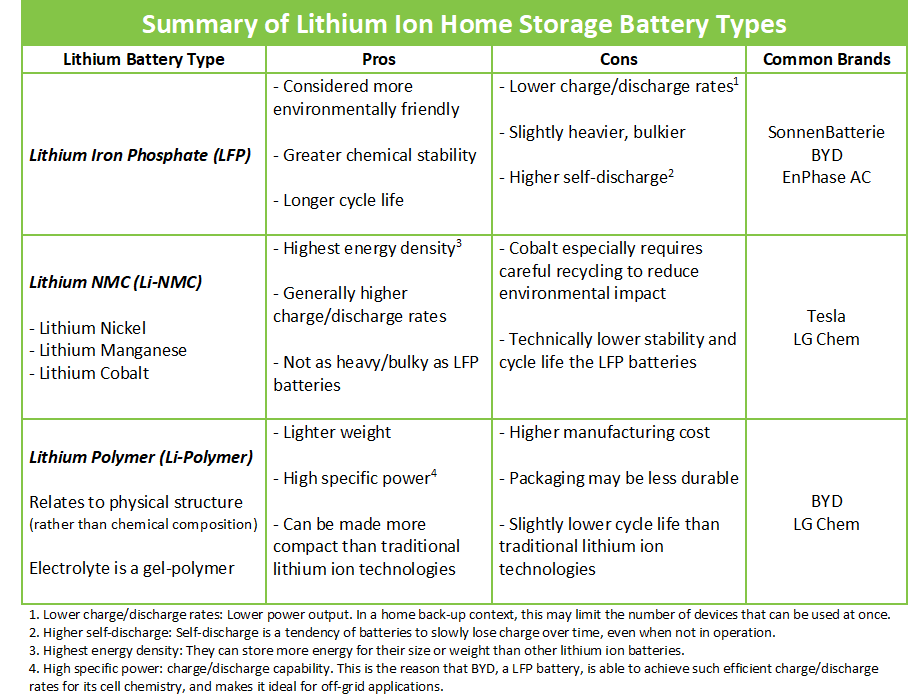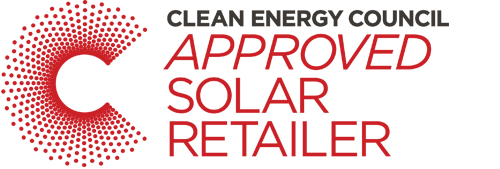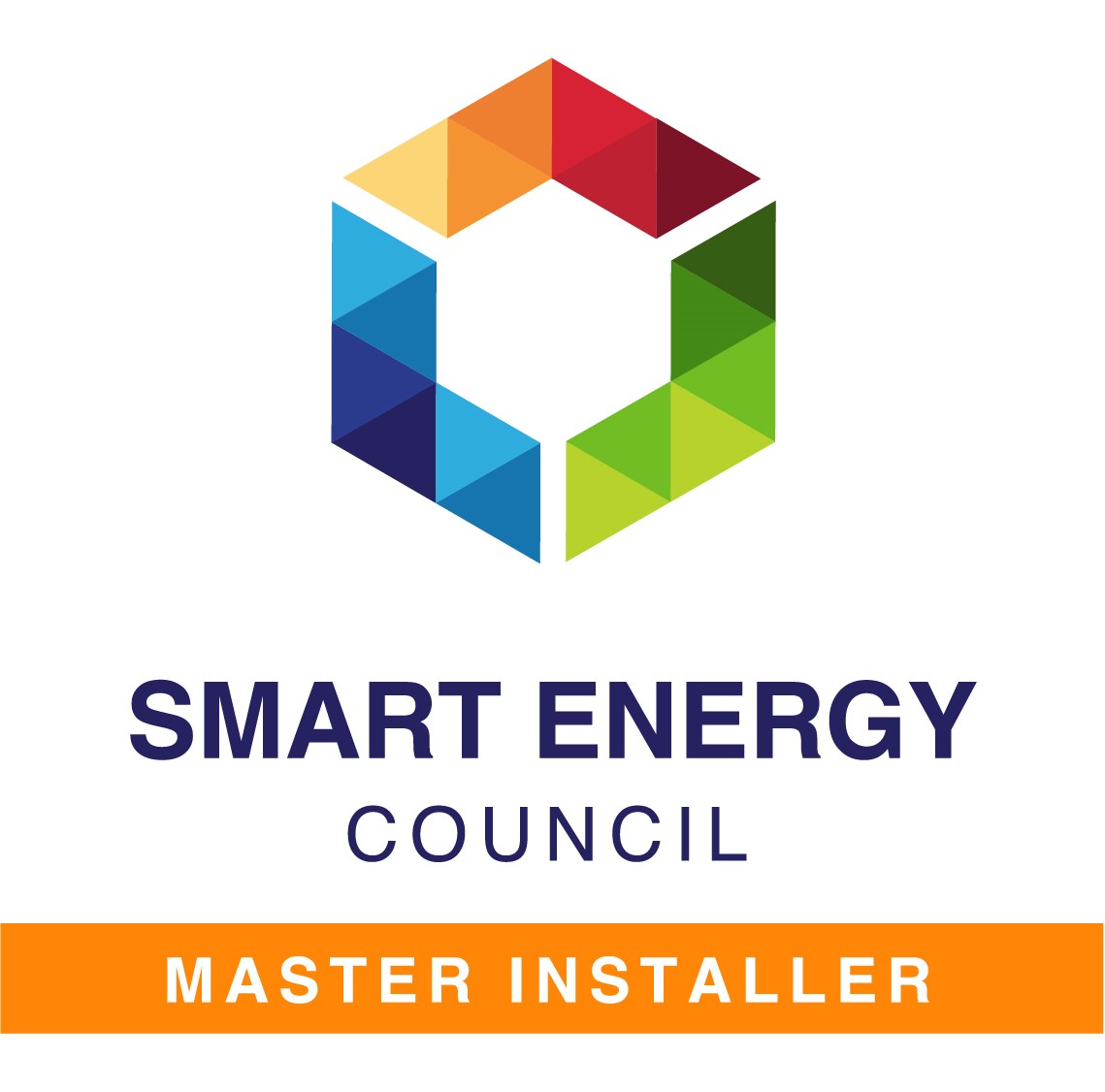Lithium Ion Batteries – What’s the Difference?
04 Jul, 2018
Lithium Ion, Lithium Iron, Lithium NMC, Lithium Polymer – what’s the difference?
We’ve put together a summary to help make things a little clearer.
Battery Basics
To bring things right back to basics, batteries contain 3 essential components:
- Anode (an electrode that releases electrons during discharge, creating a negative charge)
- Cathode (an electrode that absorbs electrons during discharge, creating a positive charge)
- Electrolyte
An electrode is an electrical conductor, a piece of conductive material through which electric current can flow; it is used to make contact with the non-metallic part of the battery circuit (containing the electrolyte).
The electrolyte is a chemical medium that promotes the movement of charged molecules (ions) from the positive to negative electrode (charging), or the negative to positive electrode (discharging). It may be a soluble salt, acid, or other base in liquid, gel (micro-porous), or even dry form.
When a battery is charging/discharging, the ions in the electrolyte are attracted to one electrode, while repelled by the other. This movement of ions creates an electrical current.
Lithium Batteries & Lithium Ion Batteries
A lithium battery is a non-rechargeable battery that uses pure metallic lithium as the anode.
In contrast, a lithium-ion battery is a rechargeable battery that uses a lithium compound (a mixture of lithium + one or more other material) as the cathode.
The term ‘Lithium Ion’ includes all the various rechargeable lithium-compound batteries that have been developed, including lithium iron-phosphate (LFP), lithium nickel-manganese-cobalt (NMC), lithium polymer, and others.
Lithium Iron Phosphate
Also known as a ‘LFP’ or lithium ferro-phosphate batteries, these batteries use only one main lithium compound, lithium iron phosphate.
Examples of this type of lithium battery include Sonnen, BYD, and Enphase AC batteries.
Pros:
- Considered more environmentally friendly
- Greater chemical stability
- Longer cycle life
Cons:
- Lower charge/discharge rates (i.e, lower power output. In a home back-up context, this may limit the number of devices that can be used all at once)
- Slightly heavier, bulkier
- Higher self-discharge than other Li-Ion batteries (self-discharge is a tendency of batteries to slowly lose charge over time, even when not in operation)
Lithium NMC
This form of lithium battery uses a mixture of different lithium compounds, rather than a single lithium compound. NMC stands for Nickel-Manganese-Cobalt, the three primary lithium compounds used in this style of battery.
Well-known examples of this variation include Tesla and LG Chem.
Lithium NMC is considered one of the most functional lithium-ion battery designs. The combination of the individual lithium-ion compounds work together to provide high capacity and power output, while still providing practicable stability and shelf-life.
Cobalt provides high energy density; manganese provides greater stability & safety; and nickel provides high specific energy (capacity) and greater cycle life.
Pros:
- Highest energy density (they can store more energy for their size or weight than other lithium-ion batteries)
- Generally higher charge/discharge rates
- Not as heavy/bulky as LFP Batteries
Cons:
- Cobalt especially requires careful recycling to reduce environmental impact
- Technically lower stability and cycle life than LFP Batteries
Lithium Polymer
Lithium polymer is not considered a unique battery chemistry. The designation generally relates to the physical (rather than chemical) structure of the battery, where a gel-polymer micro-porous electrolyte replaces a traditional porous separator soaked with electrolyte.
Examples of this home battery storage type include both BYD (chemical composition of Lithium Iron Phosphate) and LG Chem (Lithium NMC).
Pros:
- Lighter weight
- High specific power (charge/discharge capability; this is the reason that BYD, a Lithium Iron Phosphate battery, is able to achieve such efficient charge/discharge rates for its cell chemistry and makes it ideal for off-grid applications)
- Can be made thinner than conventional lithium ion batteries
Cons:
- Higher manufacturing cost
- Packaging may be less durable
- Slightly lower cycle life than the traditional lithium ion battery technology
Other Lithium Ion Batteries
There are a number of other Lithium Ion battery technologies that have been developed, including:
- Lithium Titanate (LTO)
- Lithium Nickel Cobalt Aluminium (NCA)
- Lithium Cobalt Oxide (LCO)
- Lithium Manganese Oxide (LMO)
Due to either cost of manufacture, or stability/performance parameters, none of these technologies are generally available as grid-connected home storage batteries in Australia at this time.
References



















